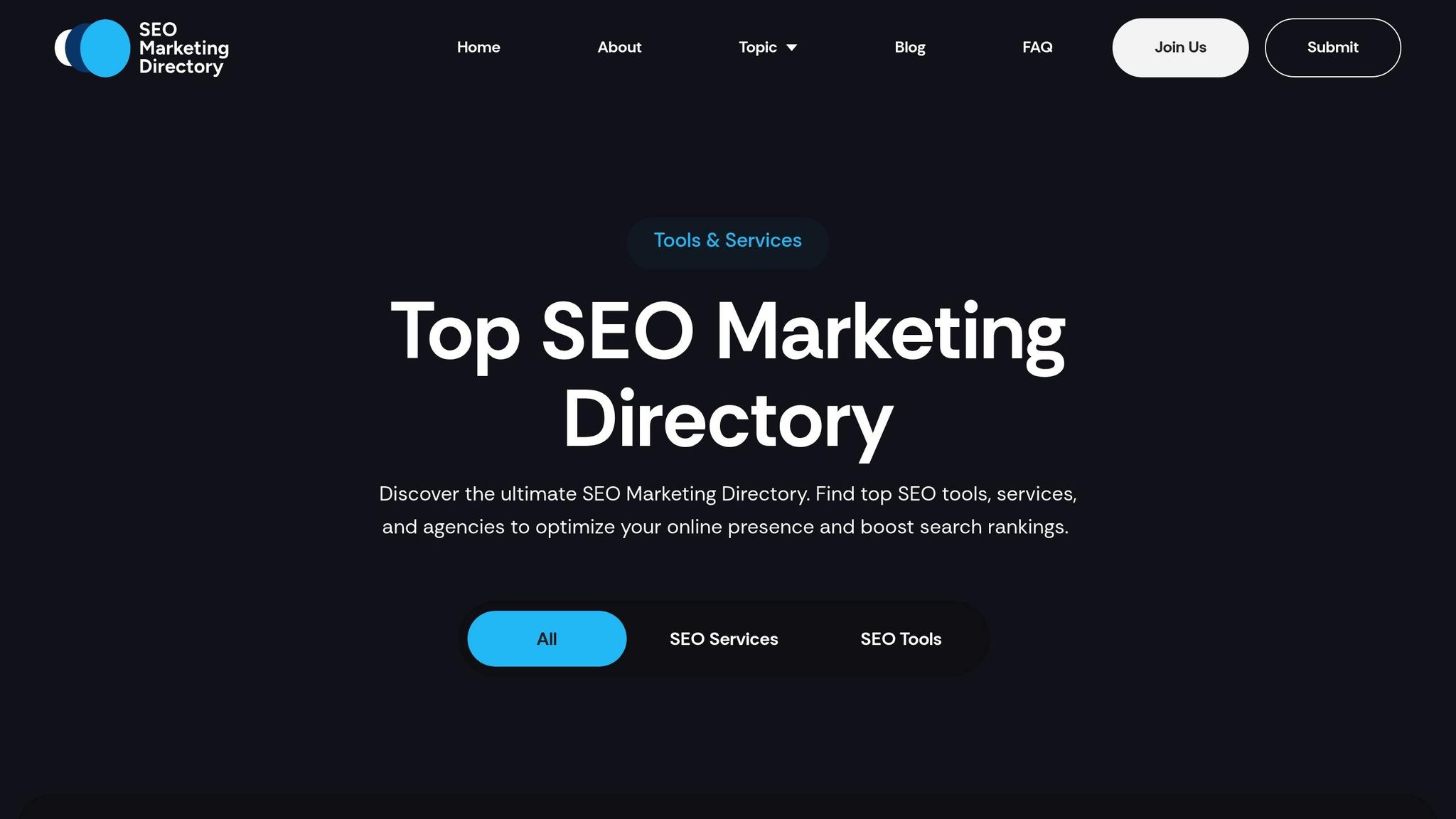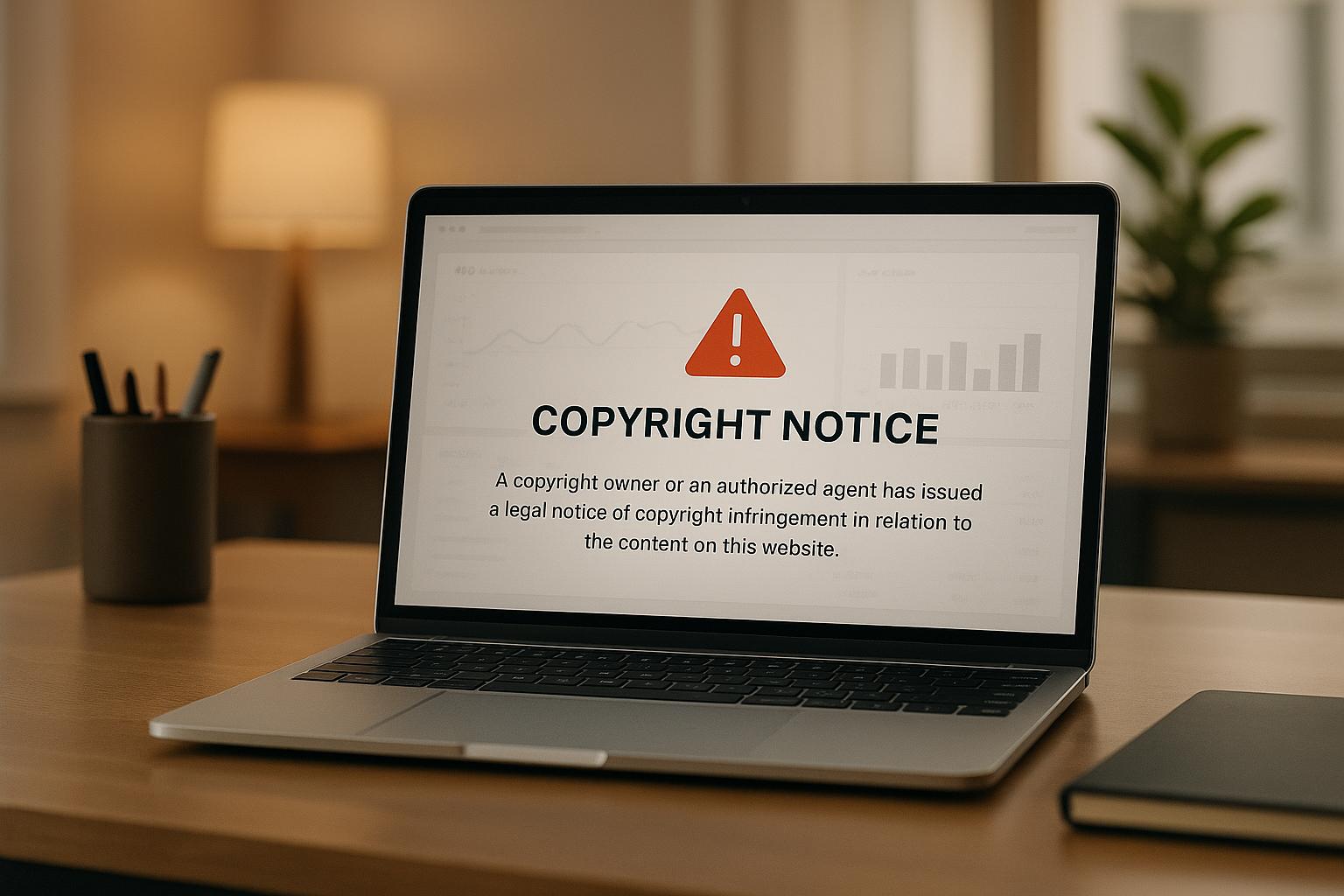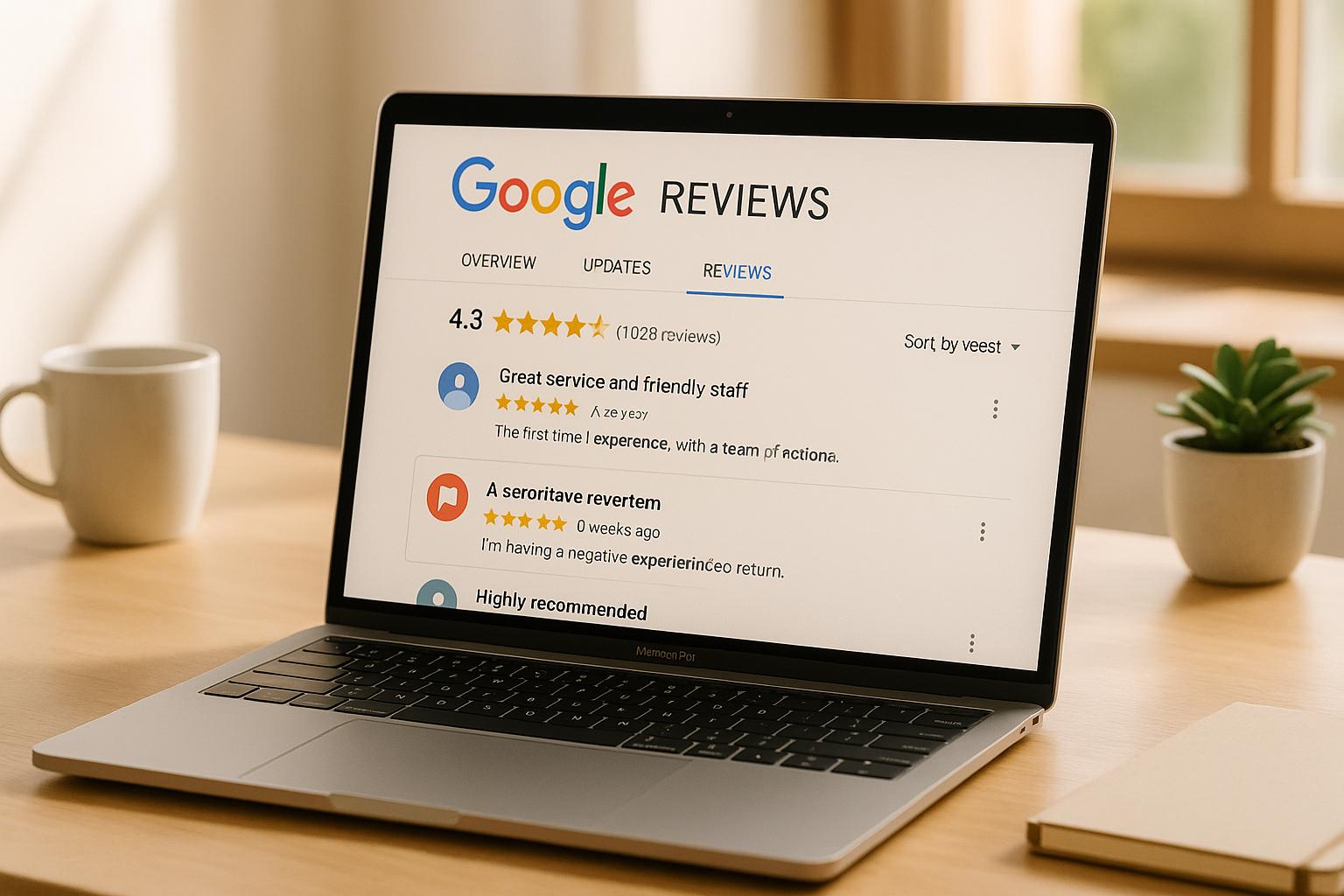Optimizing mobile typography is critical for SEO. Why? Because over 60% of web traffic comes from mobile devices, and Google’s mobile-first indexing prioritizes user experience on smaller screens. Poor typography can hurt readability, increase bounce rates, and lower your rankings. On the other hand, well-designed typography improves engagement, time on page, and even conversion rates.
Key Takeaways:
- Font Choice: Use web-safe, sans-serif fonts for readability and faster loading.
- Sizing & Spacing: Base font size should be 12–14px on smartphones. Keep line lengths between 45–60 characters and line heights 1.5x the font size.
- Performance: Reduce font file sizes using subsetting and modern formats like WOFF2. Implement
font-display: swapfor smoother font loading. - Responsive Design: Use relative units (
em,rem) and CSS features likeclamp()for scalable typography across devices. - Testing: Regularly audit typography for readability, accessibility, and SEO impact using tools like Google’s Mobile-Friendly Test.
Typography isn’t just about aesthetics - it directly impacts how users interact with your site and how search engines rank it. By improving readability, load speed, and responsiveness, you can boost both user satisfaction and search visibility.
How To Handle Web Font Sizing? - SearchEnginesHub.com
Best Practices for Mobile-Friendly Typography
Creating mobile-friendly typography requires thoughtful font choices, appropriate sizing, and responsive design to ensure readability and even improve SEO performance.
Choosing the Right Fonts for Mobile
Font selection plays a key role in mobile design. Stick to web-safe fonts for faster load times and consistent display across devices. Common choices like Arial, Helvetica, Georgia, and Times New Roman are widely supported and reliable.
Sans-serif fonts generally perform better on mobile screens because their clean, simple lines remain clear even at smaller sizes. While aesthetics are important, prioritize readability - fonts that work well on desktop might not translate smoothly to smaller screens. Always test your font choices on actual mobile devices to confirm they’re user-friendly.
To avoid issues when a primary font fails to load, include fallback fonts in your CSS. For example:
font-family: "Helvetica Neue", Arial, sans-serif;
This ensures your content stays readable no matter what.
Additionally, choose a font weight that balances clarity and visual appeal. Medium to regular weights (around 400–500) are typically ideal for mobile, while fonts that are too light or overly bold can hinder readability on small screens.
Once you’ve picked the right fonts, it’s time to fine-tune text size and spacing for better clarity.
Optimizing Font Size, Line Length, and Spacing
For body text on mobile, aim for a base font size of 12–14px. This eliminates the need for users to zoom in to read comfortably.
Line length also matters. Keep it between 45 and 75 characters per line, with 50–60 characters being especially reader-friendly on smaller screens.
When it comes to line height, aim for about 1.5 times the font size. For instance, if your font size is 14px, a line height of around 21px ensures proper spacing and improves readability.
Don’t forget color contrast - text should stand out clearly against the background, even in varying lighting conditions. This is crucial for accessibility and user experience.
Here’s a quick reference for font sizes and line lengths by device type:
| Device Type | Recommended Base Font Size | Optimal Line Length |
|---|---|---|
| Desktop | 16–18px | 60–75 characters |
| Tablet | 14–16px | 50–65 characters |
| Smartphone | 12–14px | 45–60 characters |
Finally, ensure your typography adjusts seamlessly across devices.
Responsive Typography Techniques
Once you’ve nailed down font choices and sizing, it’s essential to make your typography responsive. Use relative units like em, rem, vw, and vh to allow text to scale fluidly across different screen sizes.
For smooth transitions between font sizes, leverage CSS functions like clamp(). This technique ensures your fonts adjust proportionally within a defined range. Pair this with media queries to fine-tune font sizes, line heights, and spacing for specific breakpoints.
With mobile devices now accounting for over 62.71% of the market share as of January 2025, ensuring your typography adapts effectively across all devices isn’t just a good idea - it’s essential.
Improving Mobile Page Speed Through Typography Optimization
This section dives into how typography choices can directly impact mobile page speed, user experience, and SEO performance. While readability is essential, optimizing typography from a technical standpoint can significantly reduce load times without compromising on design.
Reducing Font File Size
One of the simplest ways to improve load speed is by reducing font file sizes. Font subsetting - removing unused characters from a font - can dramatically shrink file sizes. Most websites only use a small portion of a font's character set, so subsetting eliminates unnecessary data and speeds up loading times.
Another factor to consider is the number of font weights and styles. Each additional weight (like light, regular, or bold) or style (such as italic or condensed) increases the overall file size. Stick to just two or three font weights per typeface and limit the use of multiple font families. This approach reduces page weight, leading to faster load times.
Using modern font formats is another must. Formats like WOFF2 compress files by over 30% compared to older formats, making them ideal for mobile optimization.
Once font files are optimized, you can further refine their loading behavior using CSS techniques.
Improving Performance with Font-Display and Preloading
The CSS font-display property is a powerful tool for managing how fonts load, ensuring that text remains visible even if the web font takes time to load. For instance:
font-display: swap: Displays a fallback font initially, then swaps it with the web font once loaded. This balances performance and readability.font-display: optional: Prioritizes speed by showing a fallback font if the web font takes too long to load. This minimizes layout shifts but may result in the web font not appearing at all.
For most mobile sites, font-display: swap is a practical choice. Here’s an example of how to implement it in your CSS:
@font-face {
font-family: 'YourFont';
src: url('yourfont.woff2') format('woff2');
font-display: swap;
}
Additionally, font preloading can further enhance performance. By preloading critical fonts, the browser downloads them early in the page load process. To preload a font, add this to your HTML <head>:
<link rel="preload" href="yourfont.woff2" as="font" type="font/woff2" crossorigin>
Font Optimization Methods
Different optimization strategies offer unique benefits, depending on your site's needs. Here’s a breakdown:
| Method | Performance Impact | Setup Complexity | Best For |
|---|---|---|---|
| WOFF2 Format | 30% better compression than WOFF | Low | Modern websites |
| Font Subsetting | 50–80% reduction in file size | Medium | Sites with limited character needs |
| Self-Hosting | Full control over delivery | High | Performance-focused sites |
| Third-Party Hosting | Easy to implement | Low | Convenience-focused sites |
| Font-Display: Swap | Prevents invisible text | Low | Sites prioritizing consistent fonts |
| Font-Display: Optional | Fastest perceived speed | Low | Sites prioritizing speed over font fidelity |
Among these, the WOFF2 format stands out for its superior compression and broad browser support. As web font expert Bram Stein stated in the 2022 Web Almanac:
"In fact, we think it is also time to proclaim: Use only WOFF2 and forget about everything else."
Font hosting also plays a role in performance. Self-hosting gives you full control over delivery and can be faster, but it requires proper setup, such as configuring a CDN and optimizing for HTTP/2. On the other hand, third-party hosting (like Google Fonts) is easier to implement but relies on an external service, which could slow your site if issues arise.
To simplify self-hosting, tools like Google Web Fonts Helper can generate the necessary CSS and provide optimized font files. If your site supports multiple languages, you can use the unicode-range CSS descriptor to load only the character ranges you need, further improving performance.
Start with modern formats like WOFF2 and implement font-display strategies to optimize your site's typography. From there, explore subsetting and hosting options based on your technical capabilities and design requirements. These adjustments can make a noticeable difference in mobile page speed and user experience.
sbb-itb-5be333f
Testing and Monitoring Mobile Typography Impact on SEO
Testing your mobile typography is essential to catch potential issues before they affect SEO and user experience. It’s a follow-up step to earlier optimizations, ensuring that your efforts continue to deliver results. By combining typography adjustments with systematic testing and monitoring, you can confirm that your improvements are working as intended.
Testing Readability and Accessibility
To ensure your mobile typography meets readability and accessibility standards, focus on these key areas:
- Use a minimum font size of 16px for body text, paired with sufficient line height for readability.
- Maintain high contrast between text and background to enhance visibility.
- Align text to the left to avoid uneven spacing and make content easier to scan.
- Ensure interactive elements are keyboard-navigable and include clear focus indicators.
- Provide alternative text for images, especially those containing text graphics.
These practices create a more user-friendly experience on mobile devices.
Additionally, test how well your content scales to uncover accessibility barriers. According to the Web Content Accessibility Guidelines:
"Except for captions and images of text, text can be resized without assistive technology up to 200 percent without loss of content or functionality."
To support scalable text, use relative units like percentages or ems instead of fixed pixel sizes.
Using SEO Tools to Measure Typography Impact
Beyond readability checks, leverage SEO tools to measure how typography affects performance. While typography’s impact on SEO is indirect, it plays a role in critical factors like page speed, user experience, mobile-friendliness, and accessibility. Tools like Google’s Mobile-Friendly Test can help you evaluate whether your font choices enhance readability and usability on mobile devices.
Conducting Regular Typography Audits
Regular typography audits are essential for maintaining consistent mobile performance and building on earlier optimization efforts. Make these reviews a part of your routine SEO maintenance. When conducting audits, focus on how your typography performs across various mobile devices commonly used in the United States, including different iPhone and Android models with varying screen sizes and resolutions. Key steps include:
- Checking font file loading speeds and comparing them to previous benchmarks.
- Monitoring user behavior metrics like bounce rate, time on page, and scroll depth to identify potential readability issues.
- Reviewing new content or design updates to ensure they haven’t introduced typography problems that could harm SEO.
- Staying updated on accessibility standards to ensure compliance.
Document your findings during these audits to establish a performance baseline. This documentation can guide future improvements. Consistent monitoring and regular typography audits are essential for providing a seamless mobile user experience and maintaining strong SEO performance.
Using Expert Resources for Continuous Improvement
Mobile typography plays a crucial role in SEO, especially when you consider that 83.58% of Google traffic comes from mobile devices. This makes it essential to use expert tools and resources to refine and maintain your typography strategies.
After addressing key typography factors like readability and load speed, expert tools can help ensure those improvements are sustained. These resources provide ongoing support to keep your SEO performance aligned with ever-changing mobile trends.
How Top SEO Marketing Directory Can Help

The Top SEO Marketing Directory is a curated collection of tools and services designed to optimize mobile typography and other SEO elements.
Its strength lies in its focus on technical SEO and page speed optimization - two areas where typography plays a critical role. Whether you’re dealing with font loading speeds, web font optimization, or mobile rendering challenges, this directory links you to tools that can enhance your website's visibility, traffic, and revenue. Features include keyword research, on-page optimization, technical SEO, and competitor analysis.
For businesses on a budget, the directory offers a free Basic plan. Premium options start at $49/month, and large enterprises can explore custom solutions tailored to their specific needs for mobile typography optimization.
Directory Categories for Typography Optimization
The directory organizes its resources into categories that directly address mobile typography challenges:
- Mobile SEO: This category highlights companies that specialize in optimizing websites for mobile devices. Their expertise ensures a seamless, user-friendly experience, which is critical for staying competitive in today’s digital world.
- Technical SEO: Tools in this section focus on backend elements that affect typography performance. These include font file compression, CSS optimization, and rendering efficiency - key factors in how quickly and effectively your typography loads on mobile devices.
- Content Optimization: Resources here help ensure your typography supports readability and engagement. Mobile users value content that is clear, concise, and easy to consume. These tools help balance visually appealing typography with practical performance needs.
- Page Speed Optimization: Since mobile page loading speed impacts SEO rankings, this category offers tools to improve font delivery and rendering, ensuring your typography doesn’t slow down your site.
Real-world examples demonstrate how these tools can lead to measurable improvements in mobile traffic and revenue when applied effectively.
Expert Insights on the Future of Mobile SEO
As mobile SEO continues to evolve, having access to specialized resources is becoming increasingly important. Industry leaders stress the value of tools that provide actionable insights:
"In 2025, I believe the biggest shift in local SEO will be the growing emphasis on hyper-personalization and real-time updates. Businesses will need tools that not only monitor their local search performance but also provide actionable insights on how to adapt to rapidly changing conditions. AI-powered platforms like Local Falcon will play a crucial role in enabling businesses to stay competitive by analyzing complex data and delivering clear, step-by-step recommendations to improve visibility." - David Hunter, CEO of Local Falcon
This perspective underscores the importance of curated resources. The mobile typography landscape is constantly changing, and staying ahead requires tools that adapt quickly and provide clear, actionable guidance for continuous improvement.
Conclusion: Key Takeaways for Mobile Typography Optimization
Optimizing typography for mobile devices is a must for strong SEO performance, especially now that mobile browsing leads the way and Google's mobile-first indexing emphasizes usability on smaller screens.
Good readability is the foundation. Using a font size tailored for mobile, keeping text blocks concise, and sticking to line lengths of 50–60 characters make reading on small screens much easier. Contrast matters too - ensuring your text stands out against the background helps reduce bounce rates and keeps users engaged.
Once readability is in check, focus on performance. Did you know that just a one-second delay in mobile loading time can slash conversions by 20%? To avoid this, compress font files and use proper font-display settings to speed up loading times.
Regular testing is non-negotiable. Tools like Google Search Console and mobile-friendly tests can help you catch and fix issues early. Running typography audits on a routine basis ensures your site aligns with changing user habits.
Responsive design is equally important. Using media queries and viewport units allows your typography to adapt seamlessly across devices, whether users are on a smartphone, tablet, or desktop.
Mobile typography isn’t a one-and-done task. Staying on top of best practices for readability, performance, and responsiveness ensures your site remains competitive and keeps users coming back. Prioritize clarity, speed, and ongoing refinement to maintain strong mobile SEO results.
FAQs
How does improving mobile typography impact SEO performance?
Improving mobile typography can play a big role in boosting your SEO by enhancing readability and delivering a smoother user experience. Fonts that are easy to read help lower bounce rates, keep visitors engaged longer, and increase dwell time - all of which are metrics search engines use to rank pages.
On top of that, fine-tuning typography ensures your site is ready for mobile-first indexing, which is a key focus for search engines. Using the right font sizes, proper spacing, and ensuring typography loads quickly can make your site more mobile-friendly and positively impact your search rankings.
How can I make typography responsive and easy to read on mobile devices?
To make your typography work well on mobile devices, opt for scalable units like em or rem instead of fixed pixels. These units adjust more effectively to various screen sizes. For body text, stick to a font size between 14–16px to ensure readability, and aim for line lengths of 35–45 characters to keep reading comfortable.
You can also use fluid typography, which involves tweaking font sizes and line spacing based on different screen breakpoints. Avoid fixed sizes, as they can look inconsistent across devices. Prioritizing flexibility and readability not only improves the user experience but also helps your site perform better in search rankings.
How can I evaluate if my mobile typography improves user experience and SEO performance?
To evaluate if your mobile typography improves user experience and supports SEO, start by leveraging tools like Google’s Mobile-Friendly Test and PageSpeed Insights. These tools can help you analyze critical aspects like readability, loading speed, and overall usability on mobile devices.
Beyond that, consider running A/B tests with variations in font sizes, styles, and line spacing. This approach helps you understand how typography influences key engagement metrics such as bounce rate, time on page, and user retention. You can also conduct mobile usability testing to observe how users interact with your text, ensuring it’s both visually appealing and optimized for search engines.


